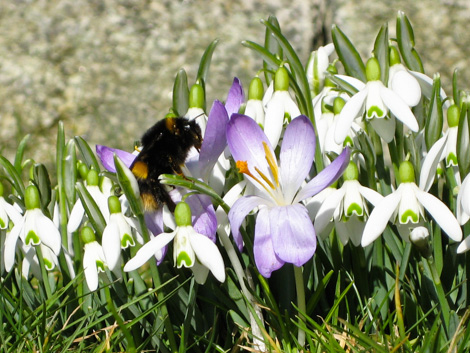This year I signed up to do my first proper wildlife survey (one step up from the annual Big Garden Birdwatch or Big Butterfly Count, both of which I do most years). I have developed an interest in Bumblebees, I’m not sure why, I think it is through a combination of watching them through my macro lens and also because of all the information that is now out there due to the worry over the disappearance of pollinators.
The Bumblebee Conservation Trust launched it’s BeeWalk last year. It is asking volunteers to choose a 1-2km walk (as compared to a lot of surveys where the walks are in randomly allocated squares) and to walk it once a month between March and October, preferably in warm, dry and still conditions, and recording any bees spotted along the way.
I chose my route in an area where I knew I would have no trouble getting to once a month (in fact I tend to visit most parts of it every week) and then refined it to take in as many different habitats as I could. It starts in an industrial estate, heads past some fields, some new houses with some scrubby bits, more fields and more grasslands and houses. Not overly inspirational, but I am hopeful for some bumbles this summer.
What I wasn’t too hopeful about was my chances of seeing some bumbles this weekend. The weather has not been exactly warm, but with the forecast for today looking better than the rest of the week, and March rapidly vanishing into the realms of memory, I thought I’d better get my bum in gear and get out there looking for bees. This is actually a good time of year to start learning about bees because there are only the queens of true bumblebees generally about. There are no males, very few workers and none of those pesky cuckoo bees to confuse an amateur.
However, I was pleasantly surprised as there were actually some bees out. Due to a lack of flowers to be seen on the ground, I had to look up into the trees to find them, and it took a while to get my eye in. However, during the 1 hour walk I managed to spot 8 bees of three different species (and two butterflies, one hoverfly and a lacewing).
Most of the bees, with the exception of two queens which were quartering the ground under some hedgerows, were feeding on willow catkins (I have no idea if these were from goat willow, crack willow or grey willow as I didn’t even realise that there were as many different types until I looked online). When most people think of bees, they think of flowers, and if they think of trees at all they think of cherry blossom. However, at this time of year, the catkins of willow trees are an important source of nectar and pollen for bees and other insects. This became evident when we stood under one of the willows watching the honeybees in the tree. It sounded as though we were stood near to a hive. We spotted more than a dozen and they were so covered in willow pollen that they were glinting in the sunlight, looking as golden as the catkins themselves.
The next time I’m out and about I’ll definitely make a bee-line for the willows and see what’s buzzing.
